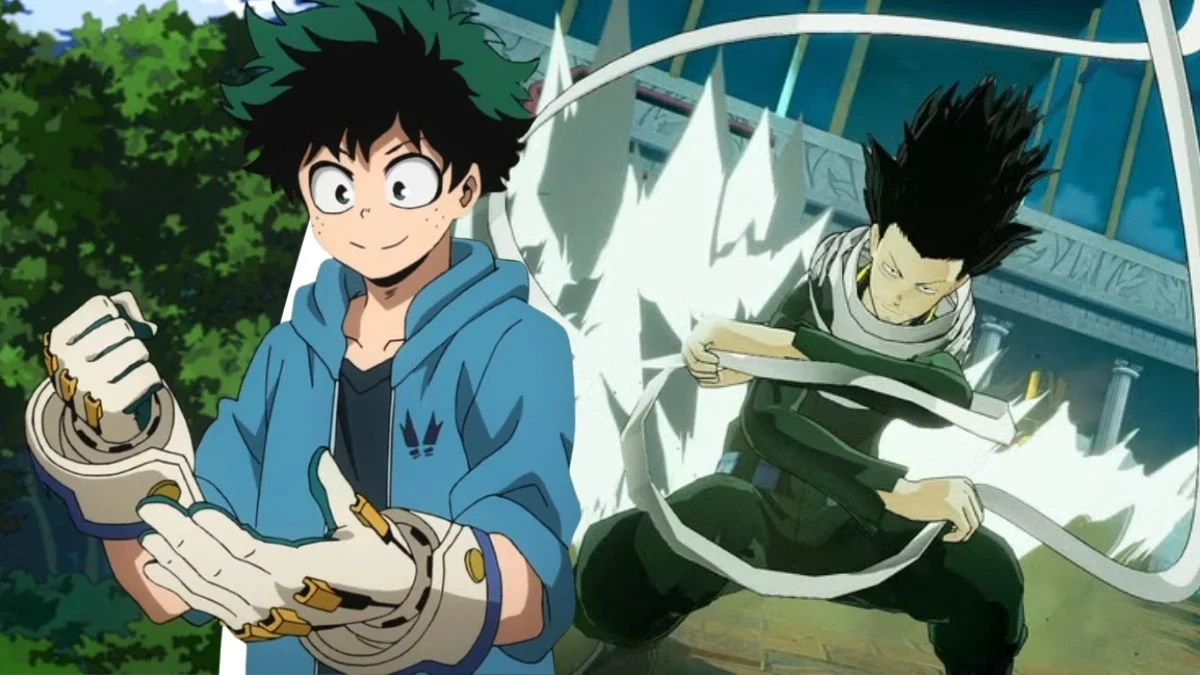
Because ‘My Hero Academia‘ is so popular and closely watched, fans quickly notice even small mistakes. The show is fast-paced with a lot happening, so occasional errors in a single frame or two sometimes make it through. These details usually become apparent when viewers rewatch episodes, pausing to examine each frame closely or compare scenes from different parts of the story.
These small mistakes don’t affect the plot, but they’re fun to spot! You can find flipped images and moving objects in various scenes, like classrooms, competitions, and big battles. If you’re interested in how anime is made, these show how tricky it can be to maintain consistency when different animation teams work on the same scenes with limited time.
Todoroki’s scar flips sides in mirrored shots
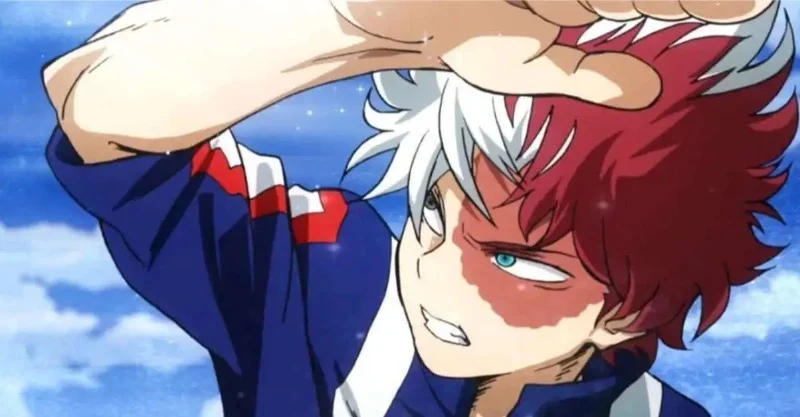
Shoto Todoroki has a burn scar on the left side of his face. However, in a few quick scenes – often during fast-paced tournament fights or reaction shots – the scar briefly appears on the right side. These instances are usually single frames inserted between correctly angled shots, making the flipped scar noticeable when comparing the frames closely.
You’ll often notice this when watching videos of events, especially when the camera quickly pans across the scene. To maintain visual consistency during these fast movements, editors occasionally use flipped frames, which reverses everything – including faces. If the footage is then played backward, any facial markings, like scars, will briefly appear to move from one side to the other before returning to their normal position with the next camera angle.
Bakugo’s gauntlets change size and straps between cuts
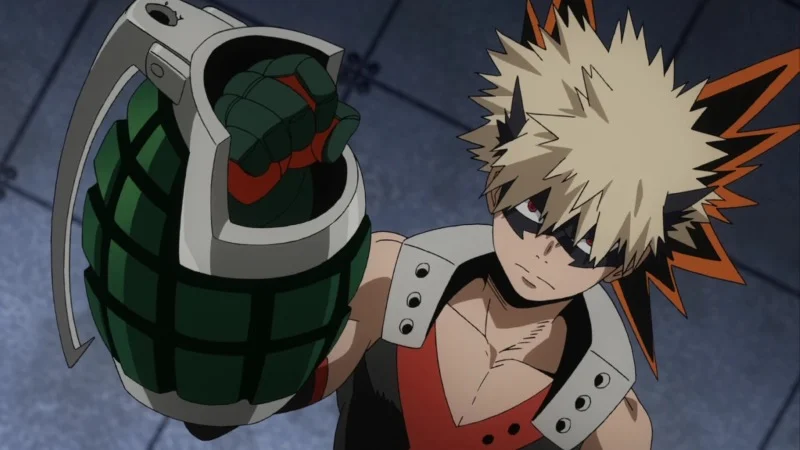
Katsuki Bakugo’s grenade gauntlets have noticeable straps and a large shape. Sometimes, during fights, the size or strap placement of a gauntlet seems to change slightly between different camera angles. You can see this when he lifts both arms – a close-up might show something different than a wider shot, creating a visual inconsistency.
This issue usually occurs in complex scenes with many visual effects, especially when the gauntlets are drawn over layers of explosions. While prop model sheets are meant to ensure consistency, differences can arise when different teams work on effects and character details. A small shift in a strap or the edge of the gauntlet can become noticeable during the animation process.
Midoriya’s gloves and finger braces appear and disappear
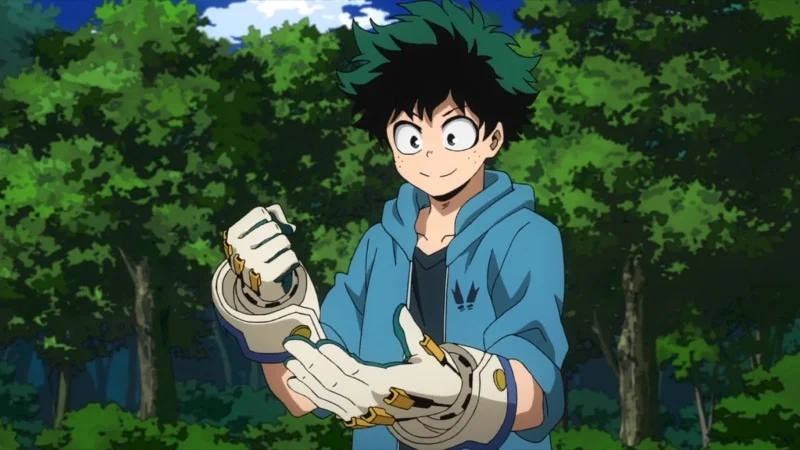
Izuku Midoriya’s hero costume gloves have visible stitching and sometimes finger supports. However, these details aren’t always consistent. In fast-paced scenes, the stitching might disappear, or supports that were there a moment before might be gone. You can notice this when comparing shots of him preparing to punch – the gloves have detail – to shots of the actual impact, where his hands look simpler.
To make action scenes look smoother, details on gloves are often simplified during fast movements, like smears and impacts. When the action slows down, the full glove details reappear. If you watch closely, you might notice missing lines or straps for a brief moment before the gloves return to their normal appearance.
Class 1 A seating shifts between scenes
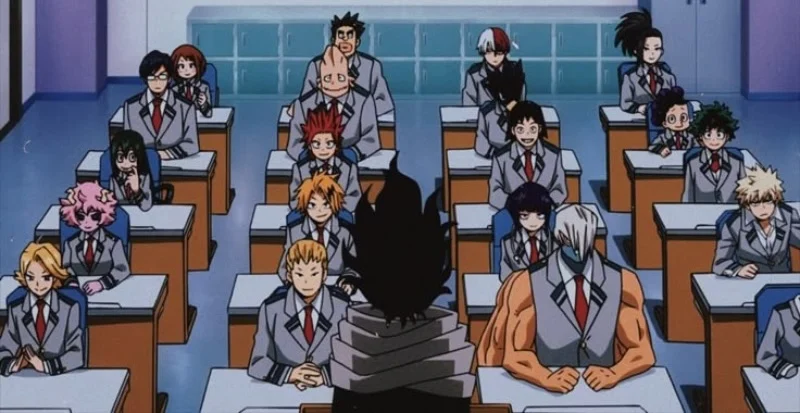
Although Class 1-A generally sits in the same arrangement, you might spot a student briefly at a different desk. They’ll sometimes appear in a different location in a wide shot, then return to their usual seat in the next scene. This is most noticeable when the camera switches between views from the front and back of the classroom.
Backgrounds are frequently used multiple times in different episodes. When these backgrounds are reused and characters are added on top, things can sometimes look off. For example, if a background from a previous lesson is used with new dialogue, a character’s name or the character themselves might be slightly out of place. This is why you might briefly see a student in the wrong seat before the scene changes and everything is corrected.
Sports Festival audience signs change between cuts
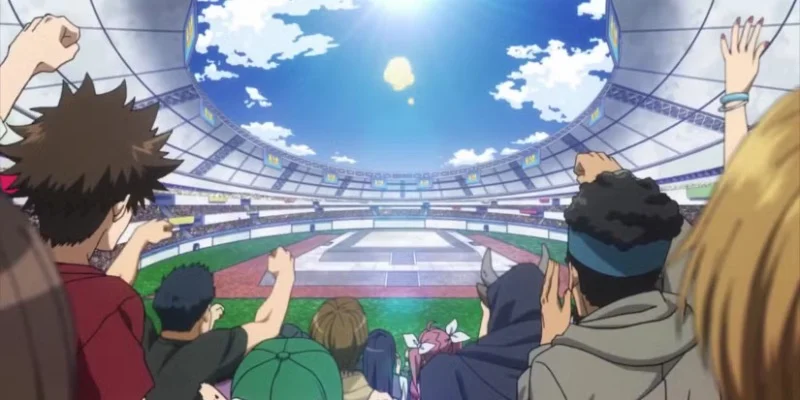
Throughout the U.A. Sports Festival, you can see signs held by audience members with names and encouraging messages. Interestingly, the text on these signs sometimes changes slightly between different camera shots. A sign that initially displays one message might appear with rearranged words or spacing when the camera focuses back after showing a reaction from someone else.
To create the look of large crowds in stadiums, filmmakers often use repeating sections of digitally created people and signs. Because these elements are created in batches, slight variations can occur in the signs shown from one camera angle to another. This can create the illusion of signs momentarily changing or ‘rewriting’ themselves between quick cuts during the same event.
License Exam arena props shift positions
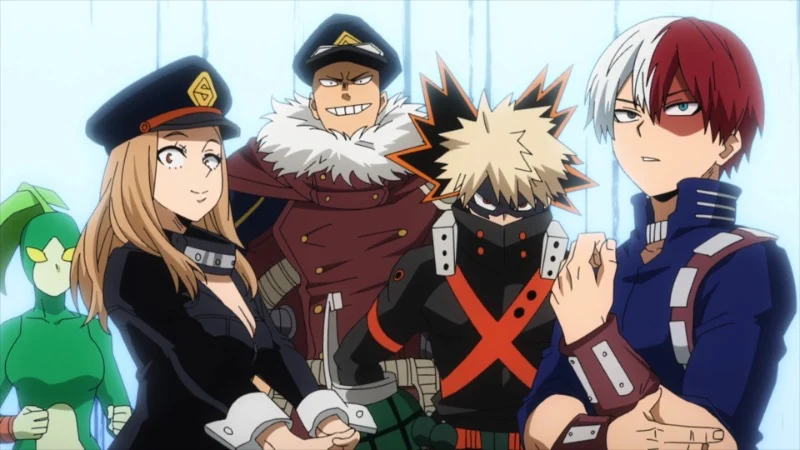
The Hero License Exam takes place in a large arena filled with props like barriers, soft obstacles, and fake walls. During the exam, you might see these props appear to change position quickly. For example, an obstacle might look one way in a wide shot, then seem tilted differently when the camera angle changes. This becomes obvious when a character uses an object for cover, and the next camera shot shows it positioned at a different angle.
These backgrounds are built using separate, interchangeable parts. When animators change to a new background for an action scene, a piece might load facing its original direction instead of how it was positioned in the last shot. This slight shift in angle is enough to create the illusion that an object has moved or jumped.
School uniform details switch sides in close ups
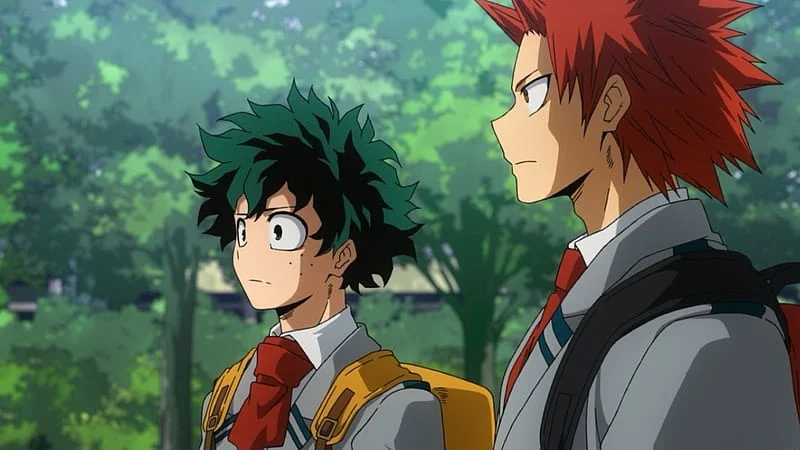
Uniforms at U.A. High are very consistent in how they look, with details like pocket flaps, tie positions, and creases in the sleeves all being the same. However, in some scenes with characters talking, a close-up shot will briefly show these details – like a pocket flap or tie clip – on the opposite side compared to the previous shot. This switch is most noticeable when the camera angle changes, for example, when showing characters from over each of their shoulders, and the detail seems to flip sides as they speak.
This often happens because of a reversed camera shot used to keep the action flowing smoothly. When a shot is flipped to maintain where characters are looking, details like pockets or asymmetrical designs on clothing also appear flipped. When the camera angle returns to its original position, these details switch back, creating a brief and noticeable visual inconsistency that’s easy to spot if you pause the footage.
Aizawa’s capture weapon length varies within a scene
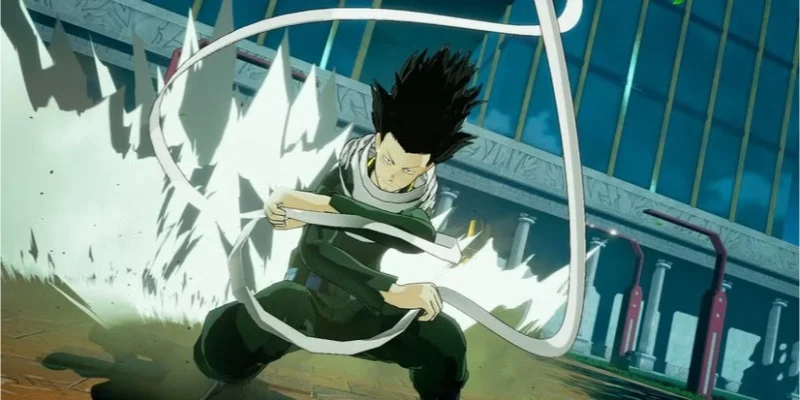
Shota Aizawa’s capture weapon has a specific range for binding enemies. However, some scenes show inconsistencies: the cloth appears to wrap around targets farther away than it should, and then, in the very next shot, the remaining length of the cloth seems too short. When comparing these frames, it’s clear the cloth stretches and shrinks instantly, without any smooth movement in between.
As a critic, I’ve noticed a common trick in filmmaking: to make things clearer, they’ll often speed up or slow down the movement of flexible objects – think fabrics or anything that bends. Then, when they cut to a close-up of an actor’s face, they’ll sometimes simplify the way those same objects look, maybe shortening a piece of cloth to keep the focus on the performance. The problem is, when you put all these shots together, the overall length of the action doesn’t quite add up – things seem to stretch or shrink unexpectedly, even though the scene is supposed to be flowing seamlessly. It’s a subtle issue, but it can definitely pull you out of the moment.
Building damage resets between cuts in major battles
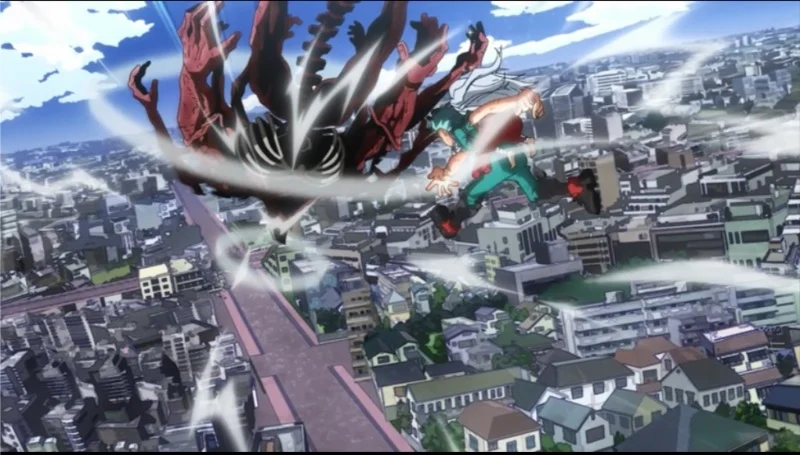
Big action scenes often leave visible damage like broken windows, cracked buildings, and torn-up streets. Sometimes, a damaged wall or window will briefly appear fixed thanks to a quick camera angle change, only to look broken again a moment later. This ‘reset’ is especially noticeable when lighting or reflections change, highlighting the restored areas.
Large location files often contain both undamaged and damaged versions of the same buildings or areas. This can cause a visual glitch when editing: if an editor switches to a shot taken before damage was added, the background might briefly show the original, clean version. When the editor then uses a newer shot with the damage included, the wreckage reappears, causing a quick and noticeable change in the scene’s appearance.
Lip sync slips between audio and mouth flaps in some versions
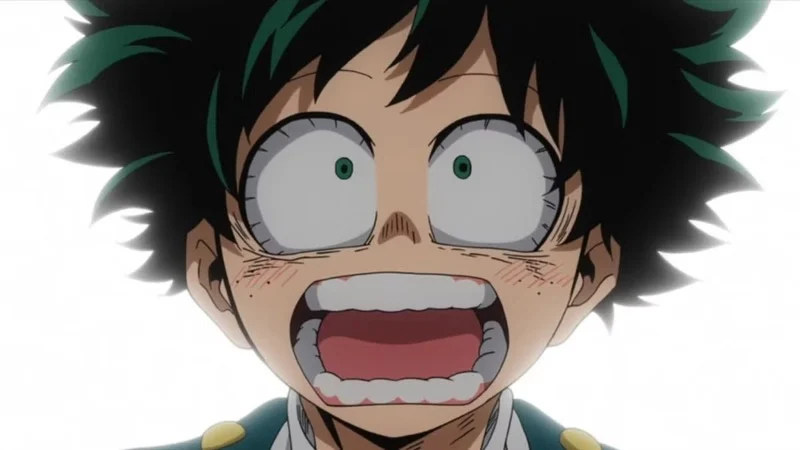
The original version of this program syncs lip movements to the Japanese audio. During fast-paced scenes, you might notice the lips are slightly out of sync with the spoken words, especially in close-up shots during intense conversations. This appears as a syllable sounding a little too early or late compared to the character’s lip movements.
In dubbed versions of the content, the audio sometimes gets slightly out of sync with the characters’ lip movements by a frame or two. This happens because lines of dialogue can be longer or shorter in different languages, and the lip movements aren’t always adjusted to match. It’s a minor issue that only appears in some international releases, not the original version.
Tell us about any small details you’ve noticed in ‘My Hero Academia’ in the comments so we can all share what we’ve found!
Read More
- Silver Rate Forecast
- Красный Октябрь акции прогноз. Цена KROT
- Gold Rate Forecast
- Dogecoin’s Big Yawn: Musk’s X Money Launch Leaves Market Unimpressed 🐕💸
- Bitcoin’s Ballet: Will the Bull Pirouette or Stumble? 💃🐂
- Navitas: A Director’s Exit and the Market’s Musing
- LINK’s Tumble: A Tale of Woe, Wraiths, and Wrapped Assets 🌉💸
- Nvidia vs AMD: The AI Dividend Duel of 2026
- Can the Stock Market Defy Logic and Achieve a Third Consecutive 20% Gain?
- Solana Spot Trading Unleashed: dYdX’s Wild Ride in the US!
2025-10-14 03:50